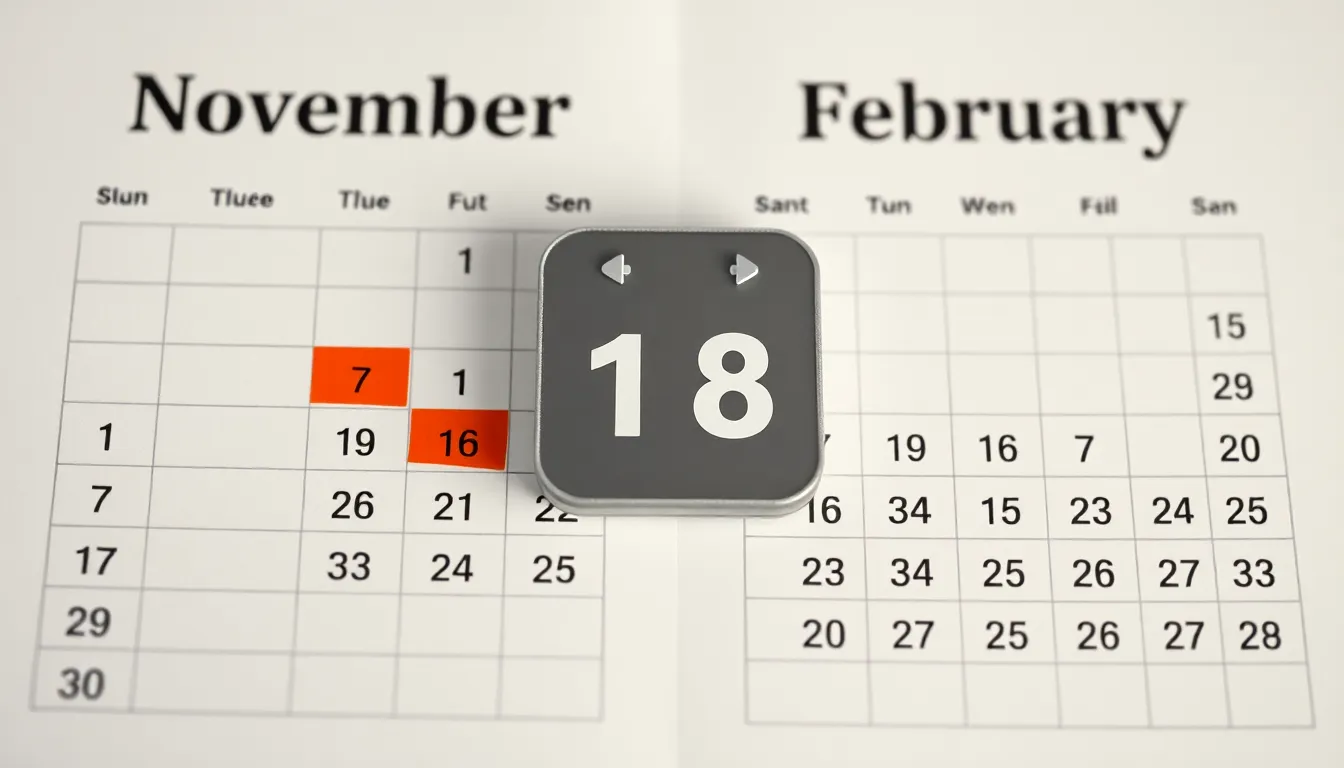Table of Contents
ToggleEver found yourself staring blankly at a calendar, wondering what 16 weeks from today even looks like? It’s like trying to find Waldo in a sea of stripes. But fear not! This article’s got your back, helping you navigate the mysterious waters of time with a sprinkle of humor and a dash of insight.
Understanding Timeframes
Understanding future dates requires breaking down time into manageable parts. Sixteen weeks consists of 112 days, providing a clearer perspective on the span ahead. This duration unfolds over four months. Each week contains seven days, contributing to the total smoothly.
Calendar days matter significantly in daily life. They help individuals plan events or set goals. When contemplating a date 16 weeks from now, envision specific milestones or occurrences. These could include birthdays, anniversaries or project deadlines.
Visualizing these weeks involves understanding their flow. Count each week systematically. The first week starts today; from there, progress forward for clarity. For instance, if today is April 1, 16 weeks from today lands on July 21.
Helpful tools enhance timelines. Utilizing digital calendars enables connections between weeks and personal commitments. Individuals can also set reminders that coincide with significant moments in those upcoming weeks.
Recognizing the psychological aspect of time perception is crucial. Time often feels shorter or longer than it is. Thinking in blocks of weeks simplifies this perception. Establishing a routine or schedule can make these blocks feel more concrete.
Ultimately, understanding timeframes like 16 weeks fosters better planning. Engaging with specific dates provides more than just a number; it opens pathways to organized time management. By breaking down each part, individuals can more effectively navigate the timeline ahead.
Calculating 16 Weeks From Today

Determining 16 weeks from today simplifies planning for upcoming events and deadlines. A straightforward approach involves recognizing that 16 weeks equals 112 days.
The Date Calculation
To find the exact date, start with today’s date and add 112 days. For example, if today is November 1, adding 112 days brings you to February 21 of the following year. Each month contributes various days, so be mindful of differing month lengths. Counting by weeks helps visualize the timeline. Breaking it down into four 4-week segments can create clearer milestones, helping track progress.
Tools for Calculation
Numerous tools aid in calculating future dates efficiently. Calendar apps on smartphones or computers allow users to input current dates and add a specific number of days. Websites dedicated to date calculations can also provide immediate results with simple inputs. Utilizing reminders can ensure users stay aware of future plans. Many planners and calendars offer functions for easy date addition, making this process even more straightforward. Engaging with these digital tools fosters organized scheduling and effective time management.
Importance of 16-Week Planning
Strategic planning over a 16-week period significantly impacts outcomes across personal and professional domains.
Personal Goals
Achieving personal goals often relies on structured timeframes. Individuals benefit from defining clear milestones within the 16 weeks. For example, setting fitness objectives can involve breaking down the timeline into weekly targets. Celebrating small victories, like a specific number of workouts completed, motivates individuals to stay on track. Incorporating time for hobbies or skill development also enhances personal fulfillment. Envisioning a balanced life often leads to greater satisfaction. This structured approach to personal objectives fosters accountability and consistent progress.
Professional Objectives
Professional objectives thrive under defined timelines. A 16-week plan allows for effective project management and goal achievement. Prioritizing key deliverables keeps teams aligned and focused. Breaking projects into manageable segments, like sprint reviews every four weeks, creates a rhythm that enhances productivity. Regular assessments of progress encourage course corrections when necessary. Engaging team members in setting shared goals ensures collective commitment. This method ultimately drives results and improves overall workplace dynamics.
Applications of 16-Week Planning
Understanding the applications of a 16-week timeframe can significantly enhance personal and professional planning.
Fitness Goals
Setting fitness goals becomes more manageable with a 16-week structure. Individuals often break down their larger objectives into smaller, attainable milestones. For example, they might aim to lose a specific number of pounds or increase endurance through structured, weekly workouts. Each week brings an opportunity to evaluate progress and adjust routines, ensuring alignment with fitness aspirations. Moreover, celebrating achievements at four-week intervals fosters motivation. Tracking daily exercise and nutrition contributes to accountability and helps maintain focus during the journey to improved health.
Project Deadlines
Project management thrives on clear timelines. A 16-week plan provides a framework for prioritizing deliverables and facilitating team collaboration. Breaking the project into four distinct phases allows teams to set interim deadlines, ensuring continued momentum. Regular checkpoints enhance accountability, allowing teams to assess progress and make necessary adjustments. Coherent communication about responsibilities and deadlines fosters alignment among team members. By mapping out tasks over these 16 weeks, organizations can streamline workflows, reducing stress while enhancing overall productivity.
Understanding what 16 weeks from today means can transform how individuals approach their goals and commitments. By breaking this timeframe into manageable segments and utilizing tools like digital calendars, planning becomes a more straightforward process.
Establishing clear milestones not only aids in personal and professional organization but also enhances motivation. Whether it’s fitness goals or project deadlines, a structured 16-week plan fosters accountability and progress.
As individuals visualize their timelines and celebrate achievements along the way, they can navigate their schedules with confidence and clarity. Embracing this approach can lead to more productive outcomes and a better grasp of time management.



